📘 Download your free grammar guide here. 📘
📘 Download your free grammar guide here. 📘
What is a sentence adverb?
What is a sentence adverb?
- Home
- Parts of Speech
- Adverbs
- Sentence Adverbs
You've probably never heard of sentence adverbs before, but I'm sure that you've encountered them.
Adverb vs. Sentence Adverb
You might already know what adverbs are.
Adverbs modify verbs, adjectives, and other adverbs.
They answer the adverb questions.
How? When? Where? Why? To what extent?
Sentence adverbs are a little bit different.
Let's look at the definition, and then we'll look at some examples.

Isn't that cool? Regular adverbs tell us about words within the sentence. Sentence adverbs tell us more about the speaker's or writer's opinion of the sentence. Whoa! (Some people call this kind of thing metadiscourse.)
Let’s look at a few examples of words acting as regular adverbs and sentence adverbs. We'll also look at their sentence diagrams.
Honestly
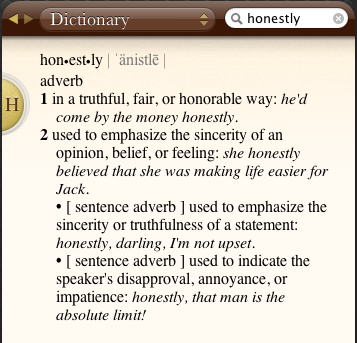
We'll look at one example of the word as an adverb and one as a sentence adverb.
Example #1 (Adverb)
in a truthful, fair, or honorable way
He earned the money honestly.
This adverb tells us about the verb. It tells us how he earned the money.
We diagram it under the verb it is modifying.
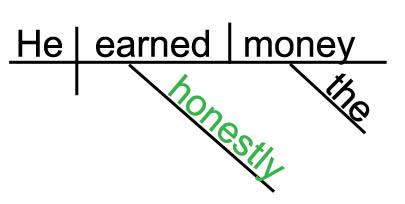
Example #2 (Sentence Adverb)
used to emphasize the sincerity or truth of a statement
Honestly, I am not upset.
Honestly tells us about the writer's attitude.
We diagram it above the sentence because it's not modifying any particular word.
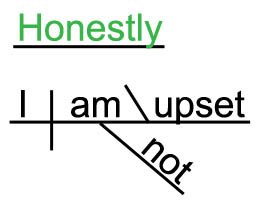
Frankly
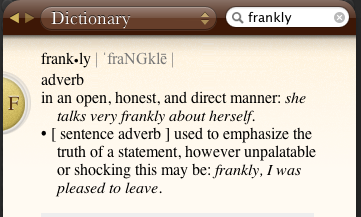
Here is a screenshot of my computer's dictionary.
This dictionary gives two definitions for the word frankly, and both of them are going to help us understand sentence adverbs.
The first definition shows the meaning of the word as a regular adverb.
Definition #1 (Adverb)
in an open, honest, and direct manner
She talks frankly about herself.
In this example sentence, frankly tells us more about the verb talks.
How does she talk? She talks frankly.
You can also see that frankly modifies talks when you look at the sentence diagram. It's diagrammed on a slanted line coming off of the verb talks.
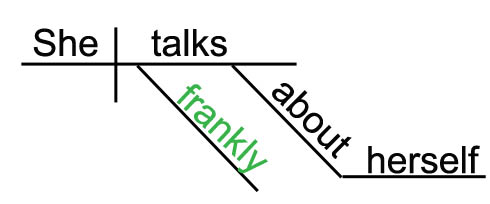
Definition #2 (Sentence Adverb)
used to emphasize the truth of a statement, however unpalatable or shocking this may be
Frankly, I was pleased to leave.
In this example sentence, frankly tells us about the writer's attitude. It's as though it is modifying the sentence as a whole rather than a single word within the sentence.
In the diagram, frankly sits on a line above the whole sentence showing us that it is a sentence adverb.
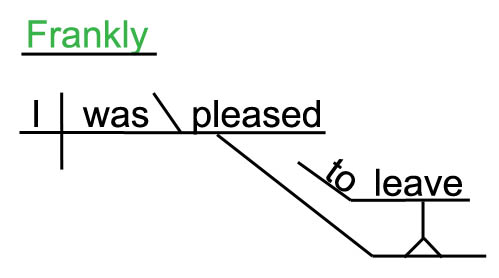
Clearly
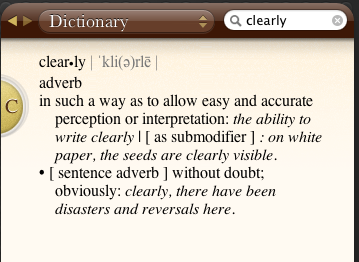
Let's look at clearly as an adverb and as a sentence adverb.
Example #1 (Adverb)
in such a way as to allow easy and accurate perception or interpretation
He writes clearly.
This adverb tells us about the verb writes. It tells us how he writes.
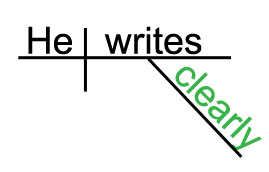
Example #2 (Sentence Adverb)
without a doubt; obviously
Clearly, this medicine isn't working.
In this sentence, clearly tells us how the writer feels about the situation.
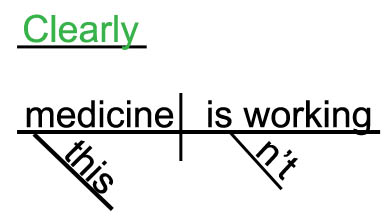
Word of Warning (Hopefully)
Some people consider certain sentence adverbs to be incorrect. (Check out the text in gray below.) This is especially true with the word hopefully. If you're thinking of using hopefully, you might want to read Grammar Girl's lesson on this topic.
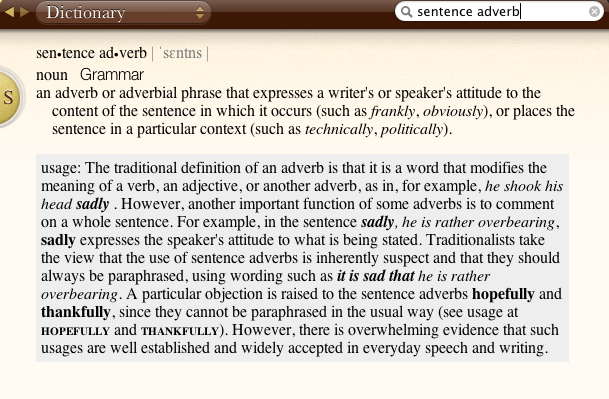
If you'd like to teach or learn grammar the easy way—with sentence diagrams—check out our Get Smart Grammar Program.
It starts from the very beginning and teaches you grammar and sentence diagramming in easy, bite-size lessons.

Hello! I'm Elizabeth O'Brien, and my goal is to get you jazzed about grammar.
Your website has brought so much clarity and simplicity to what can seem so complicated.
Thank you!
- Brenda
This is original content from https://www.english-grammar-revolution.com/sentence-adverb.html
Our Free Guide Gives You A Fun Way
To Teach And Learn The Basics v

Elizabeth O'Brien is the creator of Grammar Revolution.
Her lessons are guaranteed to give you more confidence in your communication skills and make you smile. :)


